As a small business owner, you know that effective marketing is crucial for attracting new customers and growing your brand. However, hiring a full-service marketing agency may not always be feasible, especially when you’re just starting out or operating on a tight budget. That’s where do-it-yourself (DIY) marketing strategies come into play.
growing your brand. However, hiring a full-service marketing agency may not always be feasible, especially when you’re just starting out or operating on a tight budget. That’s where do-it-yourself (DIY) marketing strategies come into play.
While DIY marketing requires time and effort, it can be a cost-effective way to promote your business and reach your target audience. In this blog post, we’ll share 10 powerful DIY marketing tips that can help you get started.
- Optimise Your Google My Business Listing
Your Google My Business listing is often the first point of contact between your business and potential customers searching online. Ensure that your listing is complete, accurate, and up-to-date with your business hours, contact information, and high-quality photos. Encourage customers to leave reviews, as positive reviews can significantly boost your local search visibility.Several free tools can help businesses optimise their Google My Business (GMB) listing. The GMB dashboard allows you to manage your profile, respond to reviews, post updates, and analyse customer interactions. Google Ads offers the Keyword Planner for identifying relevant keywords, while Google Analytics and Google Search Console provide insights into website performance and search presence. Regular GMB posts can enhance engagement, and review management tools assist in maintaining a positive reputation. High-quality photos and videos can improve listing appeal. Additionally, business listings grader tools offer recommendations for improvement, and local SEO tools help optimise local search rankings. Utilising these tools can enhance visibility, engagement, and sales. - Leverage Social Media Platforms
Social media is a powerful tool for small businesses to connect with their audience and promote their products or services. Identify the platforms where your target audience is most active and create a consistent posting schedule. Share valuable content, behind-the-scenes glimpses, and engage with your followers to build a strong online community.Many free tools can help businesses effectively leverage social media platforms. Social media management tools like Hootsuite, Buffer, and TweetDeck allow you to manage accounts, schedule posts, and track analytics. Content creation tools such as Canva, Unsplash, and Lumen5 enable the creation of visually appealing graphics, stock photos, and videos. Analytics and monitoring tools like Google Analytics, Facebook Analytics, and Twitter Analytics provide insights into social media performance and audience engagement. Hashtag research tools, including RiteTag and Hashtagify, help identify popular and relevant hashtags. These tools, while free, may have feature limitations, and upgrading to paid plans may be necessary as social media efforts expand - Create a Blog and Publish Valuable Content
A well-maintained blog can help establish your business as an authority in your industry, drive organic traffic to your website, and nurture potential customers through the sales funnel. Consistently publish high-quality, informative content that addresses your audience’s pain points and provides solutions.
Several free tools can help businesses create and publish valuable blog content. Blogging platforms like WordPress.com, Blogger, and Medium offer user-friendly interfaces, customisable templates, and built-in audiences. Content creation tools such as Google Docs, Grammarly, and Canva assist in writing, editing, and designing visually appealing posts. SEO tools like Google Search Console and Ubersuggest help optimise blog visibility in search results. Social media management tools like Buffer and Hootsuite enable scheduling and publishing posts across multiple platforms. While these tools are helpful, they may have limitations, and upgrading to paid plans might be necessary as your blogging efforts expand. - Embrace Email Marketing
Email marketing is a cost-effective way to stay connected with your customers and promote your products or services. Build an email list by offering incentives, such as discounts or free resources, in exchange for email addresses. Craft compelling subject lines, personalise your messages, and provide valuable content to keep your subscribers engaged.
Numerous free email marketing tools can assist businesses with their email marketing efforts. MailChimp offers a free plan for up to 2,000 subscribers and 10,000 emails per month, featuring user-friendly templates, automation, and analytics. SendinBlue provides unlimited contacts and up to 300 emails per day, with powerful automation and SMS integration. MailerLite’s “Free Forever” plan supports up to 1,000 subscribers and 12,000 emails monthly, including a drag-and-drop editor and automation workflows. Benchmark Email, Moosend, and Sender also offer generous free plans with varying subscriber and email limits, customisable templates, and automation features. HubSpot Email Marketing includes up to 2,000 email sends per month and integrates with HubSpot’s CRM and analytics. While these tools are beneficial, they may have limitations, and upgrading to paid plans might be necessary as a business expands. - Participate in Local Events and Networking Opportunities
Attending local events and networking opportunities can help you connect with potential customers and partners in your community. Consider sponsoring local events, hosting workshops or seminars, or participating in trade shows to increase your brand’s visibility and establish yourself as an expert in your field.Several free tools and platforms can help businesses participate in local events and networking opportunities. Meetup allows you to join local groups and attend events based on shared interests. Eventbrite lets you search for and register for various local events for free, including conferences and trade shows. Facebook Events enables discovering and RSVPing to local events hosted by businesses or individuals, while LinkedIn Events helps find industry-related gatherings and connect with attendees. Local chambers of commerce often offer free or discounted memberships with access to networking events, and local coworking spaces host workshops and mixers. Additionally, local networking groups like BNI provide regular meetings for business networking. Being strategic in attending relevant events and being prepared to engage can enhance your networking efforts - Collaborate with Influencers and Other Businesses
Partnering with influencers or complementary businesses can help you tap into new audiences and cross-promote your products or services. Identify influencers or businesses that align with your brand values and target audience, and explore mutually beneficial collaboration opportunities, such as co-hosting events, creating joint promotions, or guest blogging.Many free tools can help businesses collaborate with influencers and other businesses. Influencer discovery tools like Modash and HypeAuditor allow you to find and evaluate influencers across platforms like Instagram, YouTube, and TikTok. Modash offers filters for location, audience demographics, and engagement rates, while HypeAuditor analyses accounts for fake followers and audience quality. Influencer outreach tools such as Flick and Upfluence help find, collaborate with, and track influencers, offering AI-powered insights and campaign management features. Content creation tools like Google Workspace and Xtensio enable collaborative document and project creation. Social media management tools Hootsuite and Buffer assist in scheduling posts and tracking analytics, facilitating collaboration on social media campaigns. While these free tools are useful, they may have limitations, and upgrading to paid plans may be necessary as collaborations grow. - Optimise Your Website for Search Engines
Search engine optimisation (SEO) is crucial for ensuring that your website ranks well in search engine results and attracts organic traffic. Conduct keyword research, optimise your website’s content and structure, and build high-quality backlinks to improve your search engine visibility.Numerous free tools can help businesses optimise their websites for search engines. Google Search Console provides insights on search performance, crawl errors, and backlinks, essential for any SEO effort. Screaming Frog SEO Spider analyses site architecture and on-page optimisation, offering reports on broken links and duplicate content, and generating XML sitemaps. Google PageSpeed Insights evaluates page load times and user experience for both mobile and desktop devices. Ubersuggest aids in keyword research by providing data on search volume and keyword difficulty. Google Trends identifies trending topics and seasonal keywords, while Answer The Public generates related questions and propositions for comprehensive content creation. SEO Site Checkup offers a technical SEO audit to identify issues like broken links and slow page speeds. While these free tools are valuable, businesses may need to invest in more advanced tools as their SEO efforts expand. - Offer Exceptional Customer Service
Word-of-mouth marketing is one of the most powerful forms of advertising, and it all starts with providing exceptional customer service. Go above and beyond to ensure that your customers have a positive experience with your business, and encourage them to leave reviews and share their experiences with others.
Believe or not there are countless free tools that can help businesses offer exceptional customer service. HelpScout provides a shared inbox, automation tools, and reporting features for up to 3 email inboxes. Freshdesk includes email-based support, a knowledge base, and basic reporting, managing inquiries from email, social media, and chat. Zoho Desk supports up to 3 agents with multi-channel support and basic automation, integrating well with other Zoho products. Groove offers a shared inbox, knowledge base, and reporting, tailored for small businesses. Facebook Messenger facilitates seamless communication for businesses with strong social media presence. Google Forms allows for creating customer surveys and support request forms, integrating with Google Workspace. Canny helps collect and prioritise customer feedback and feature requests. These tools, while helpful, may have limitations, and upgrading to paid plans may be necessary as customer service needs grow. - Leverage User-Generated Content
User-generated content (UGC) can be a powerful marketing tool, as it helps build trust and credibility with potential customers. Encourage your customers to share photos, videos, or testimonials featuring your products or services, and repurpose this content across your marketing channels.Several free tools can help businesses leverage user-generated content (UGC). Social media platforms like Instagram, Facebook, Twitter, and TikTok offer built-in tools for discovering and sharing UGC. Hashtag tracking tools such as Hashtracking, RiteTag, and Keyhole enable businesses to monitor specific hashtags to find relevant UGC. Content curation tools like Curalate, StackTap, and Olapic help discover, collect, and obtain rights to use UGC from various sources. Embeddable widgets from UGC platforms can display live feeds of UGC on websites, boosting engagement. Google Alerts monitors web mentions of brands or products to uncover UGC. Online communities like Reddit and niche forums provide additional sources of UGC. While helpful, these free tools may have limitations, and businesses might need to upgrade to paid versions for advanced features as their UGC strategy grows. - Continuously Analyse and Optimise Your Efforts
Regularly analyse the performance of your DIY marketing efforts using tools like Google Analytics, social media insights, and email marketing metrics. Identify what’s working and what’s not, and make data-driven decisions to optimise your strategies for better results.There are many free tools available that can help businesses continuously analyse and optimise their efforts across various areas. Google Analytics provides insights into website traffic, user behaviour, and marketing campaign performance. Google Search Console monitors your website’s presence in search results and offers data on search traffic and technical issues. Hotjar offers heatmaps, session recordings, and feedback polls to optimize user experience. Ubersuggest aids in keyword research and content optimization. Mailchimp tracks email campaign performance, while Google Trends identifies trending topics and seasonal patterns. Social media platforms like Facebook, Twitter, Instagram, and LinkedIn offer built-in analytics tools to improve your social media strategy. These free tools are valuable, but upgrading to paid versions may be necessary as your business and analysis needs grow.
Conclusion
While these DIY marketing tips can help you get started, it’s important to remember that effective marketing requires a strategic and consistent approach. If you find yourself overwhelmed or in need of more advanced marketing support, consider partnering with a professional digital marketing agency like Edge Digital.
Our team of experts can work with you to develop a comprehensive marketing strategy tailored to your business goals, target audience, and budget. From search engine optimisation and content marketing to social media management and email campaigns, we have the knowledge and resources to take your marketing efforts to the next level.
Contact us today to schedule a consultation and learn how our agency can help you achieve sustainable growth and success.
FAQs
- What is DIY marketing?
DIY marketing refers to the practice of promoting a business using self-made or self-managed marketing strategies, rather than hiring a professional marketing agency. - Is DIY marketing effective for small businesses?
Yes, DIY marketing can be a cost-effective way for small businesses to promote their products or services and reach their target audience. - How can I optimise my Google My Business listing?
Ensure that your listing is complete, accurate, and up-to-date with your business hours, contact information, and high-quality photos. Encourage customers to leave reviews to boost your local search visibility. - How often should I post on social media?
It’s important to have a consistent posting schedule on social media, but the frequency may vary depending on your target audience and the platform you’re using. - What is user-generated content?
User-generated content refers to any content created and shared by customers or followers of a brand, such as photos, videos, or testimonials.

 growing your brand. However, hiring a full-service marketing agency may not always be feasible, especially when you’re just starting out or operating on a tight budget. That’s where do-it-yourself (DIY) marketing strategies come into play.
growing your brand. However, hiring a full-service marketing agency may not always be feasible, especially when you’re just starting out or operating on a tight budget. That’s where do-it-yourself (DIY) marketing strategies come into play.

